Venus, long regarded as the Earth's twin planet is, however, an inferno compared with our planet, with surface temperatures in excess of 450 ºC, a crushing atmosphere and dense clouds of sulphuric acid covering the whole planet.
Night-time on Venus: unpredictable winds, stationary waves and changing clouds
The UPV/EHU-University of the Basque Country is participating in international research that reveals strange atmospheric circulation on the planet's night side
First publication date: 24/07/2017
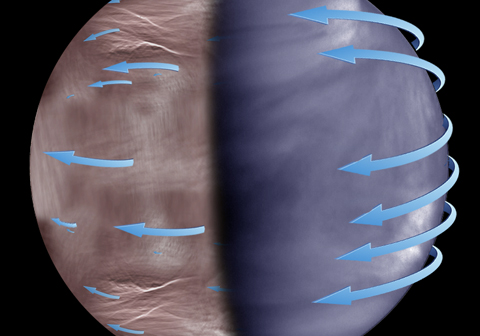
In the 1960s ultraviolet light observations allowed the movements of the clouds on the day side of Venus to be accurately measured, revealing winds of over 360 km/h. That was a total surprise because both on the Earth and on other similar planets such as Mars, the atmosphere rotates at a pace similar to that of the planet. Yet on Venus the atmosphere completes a turn around the planet in barely 4 days while the planet takes 243 days –much longer- to rotate around itself. This rapid rotation of the atmosphere is known as "super-rotation" and the physical mechanisms that produce it remain unknown. How this atmospheric circulation behaved on the planet's night side has not been known until now. However, a study led by Spanish astronomers with the participation of the Japanese Aerospace Agency (JAXA), the University of the Basque Country (UPV/EHU), the Institute of Astrophysics and Space Planetology (IAPS, Italy), the National Japanese Institute of Advanced Industrial Science and Technology (AIST), and the Technical University of Berlin, among others, now reveals that the behaviour of Venus's night-time winds is significantly different from that which occurs in day time.
"Knowing where Venus's atmosphere gets the energy from to have this ‘super rotation' remains a mystery, and the numerical models have yet to come up with realistic simulations of the planet," said Javier Peralta, member of the Japanese Akatsuki space mission at JAXA and holder of a PhD from the UPV/EHU. He is leading this study published in Nature Astronomy and highlighted by the journal in its News & Views section. "The problem is that we had wrongly assumed that what occurred during the Venus night-time was the same as during the day because until now we had not been able to see clearly what the atmospheric super-rotation was like on the night side of the planet."
"The highest clouds of Venus are at an altitude of about 70 km, at the exact point where the super-rotation is most intense. These clouds can be observed at night thanks to their thermal emission, but the images provided by previous space missions hardly showed any details in them," pointed out Ricardo Hueso, a UPV/EHU researcher. New image processing techniques have enabled this international team of researchers from Spain, Japan, Germany and Italy to discover that both the night side clouds and their movements differ from the ones observed during the day.
The study is based on the analysis of observations made by the VIRTIS tool on board the Venus Express space mission of the ESA-European Space Agency. The spacecraft orbited the planet from 2006 until 2014 with the support of independent observations made in 2015 by a Japanese team using NASA's IRTF telescope on Hawaii, which have made it possible to observe the planet's northern hemisphere, too.
"Although the super-rotation persists at night, it appears to be much less ‘uniform' than during the day, with a rich variety of movements and with cloud types we had never seen before and which undergo drastic, unpredictable changes from one day to the next," said Agustín Sánchez-Lavega, head of the UPV/EHU's Planetary Sciences Group.
But the biggest surprise was finding a great many structures in the clouds that did not move, and this has been interpreted by the team as being of a type of atmospheric wave known as "stationary" waves. These waves are similar to another undulatory phenomenon in the atmosphere of Venus recently found by the Akatsuki Japanese space mission: a stationary wave of thousands of kilometres that is located above the highlands of "Aphrodite Terra". In this new study the stationary waves are much smaller in size, to the tune of hundreds of kilometres, and they are also located in the geographical positions where there are high surface areas. Since these waves tend to form when the surface wind comes up against obstacles such as a mountain, seeing them all the time is paradoxical because the surface of Venus is not at all rugged.
It is hoped that with the observations being made by the Akatsuki spacecraft while orbiting Venus, together with the support of Earth-based observations, it will be possible to shed light on a challenge that has been going on for more than 60 years: the mystery of the super-rotation in Venus's atmosphere.
Bibliographic reference
- Stationary waves and slowly moving features in the night upper clouds of Venus
- Nature Astronomy (2017)
- DOI: 10.1038/s41550-017-0187
Image gallery
-
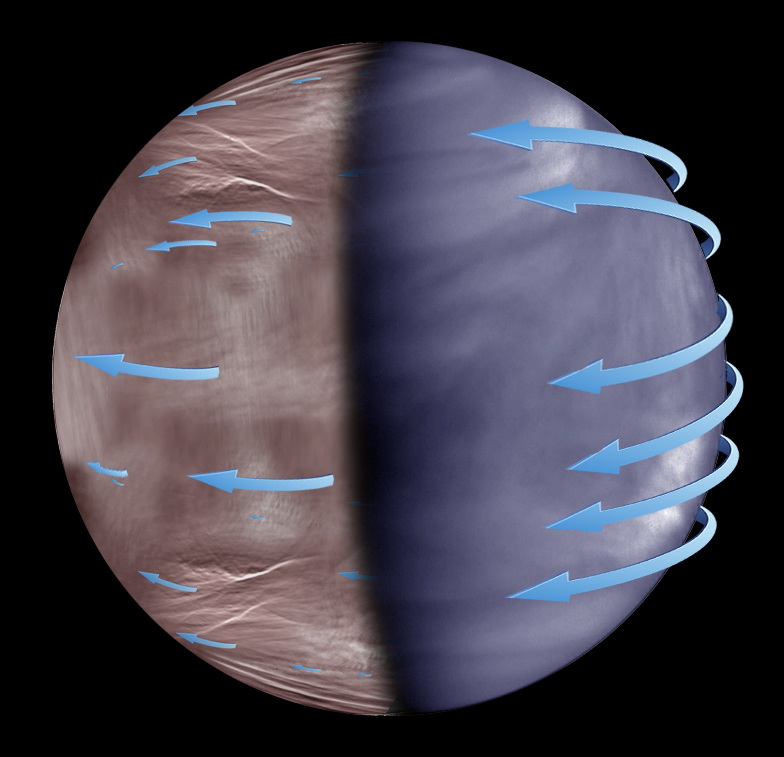
Diagram of the atmospheric super-rotation of Venus in the upper clouds. While the super-rotation is more uniform on the day side of Venus (image taken by the Akatsuki spacecraft, right), at night it becomes more chaotic and unpredictable (image taken by Venus Express, left). ACKNOWLEDGEMENTS: ESA-JAXA-UPV/EHU -
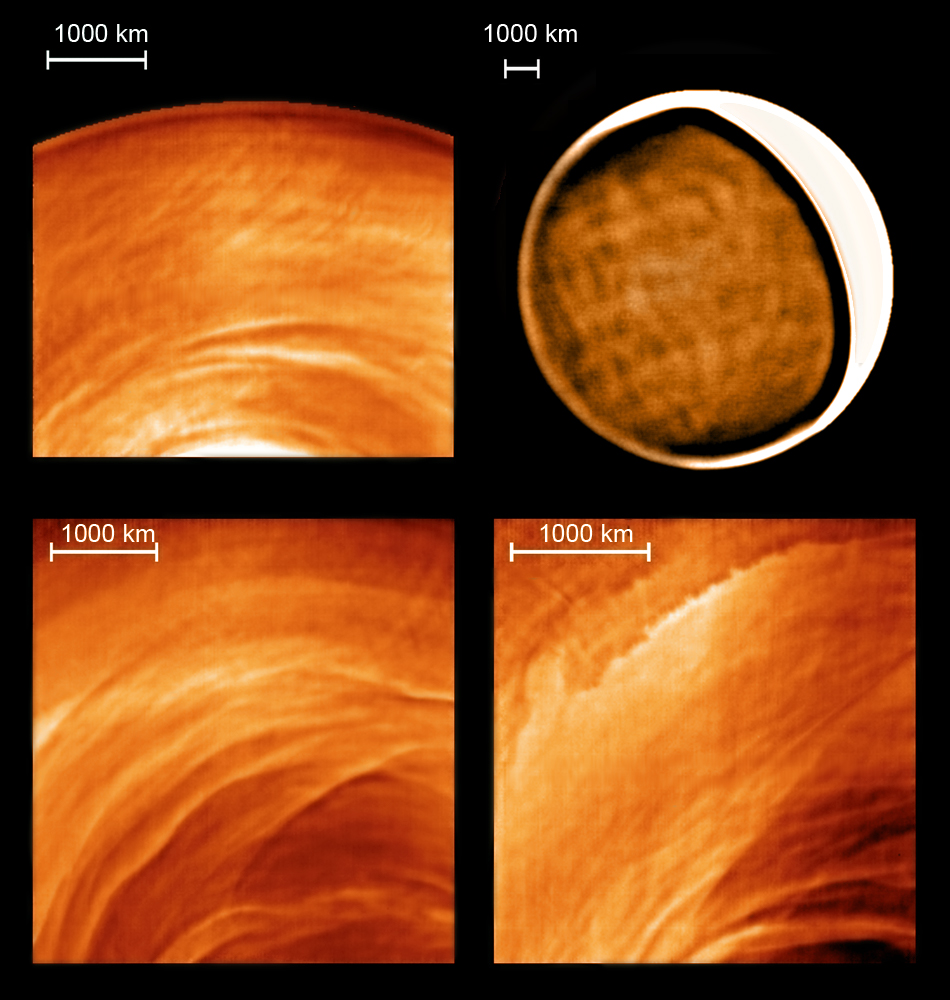
Examples of cloud types observed on the Venus night side in thermal images taken by Venus Express and by NASA's IRTF telescope on Hawaii: stationary waves (Venus Express, above left), "network" patterns (IRTF, above right), mysterious filaments (Venus Express, below left) and instabilities of dynamic origin (Venus Express, below right). ACKNOWLEDGEMENTS: ESA-NASA-JAXA-UPV/EHU. -
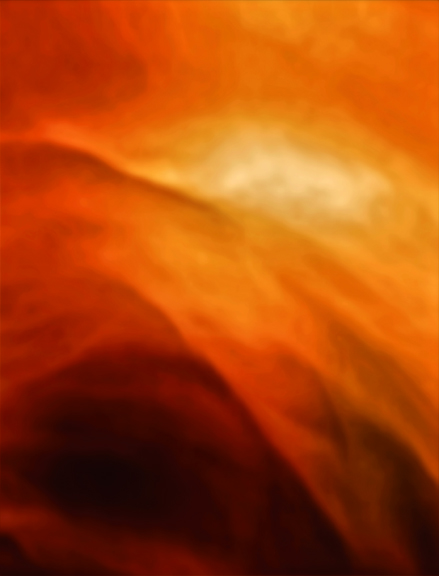
Image of a large area on the night side of Venus showing thermal emissions of the planet's upper atmosphere (Venus Express). ACKNOWLEDGEMENTS: ESA-UPV/EHU -
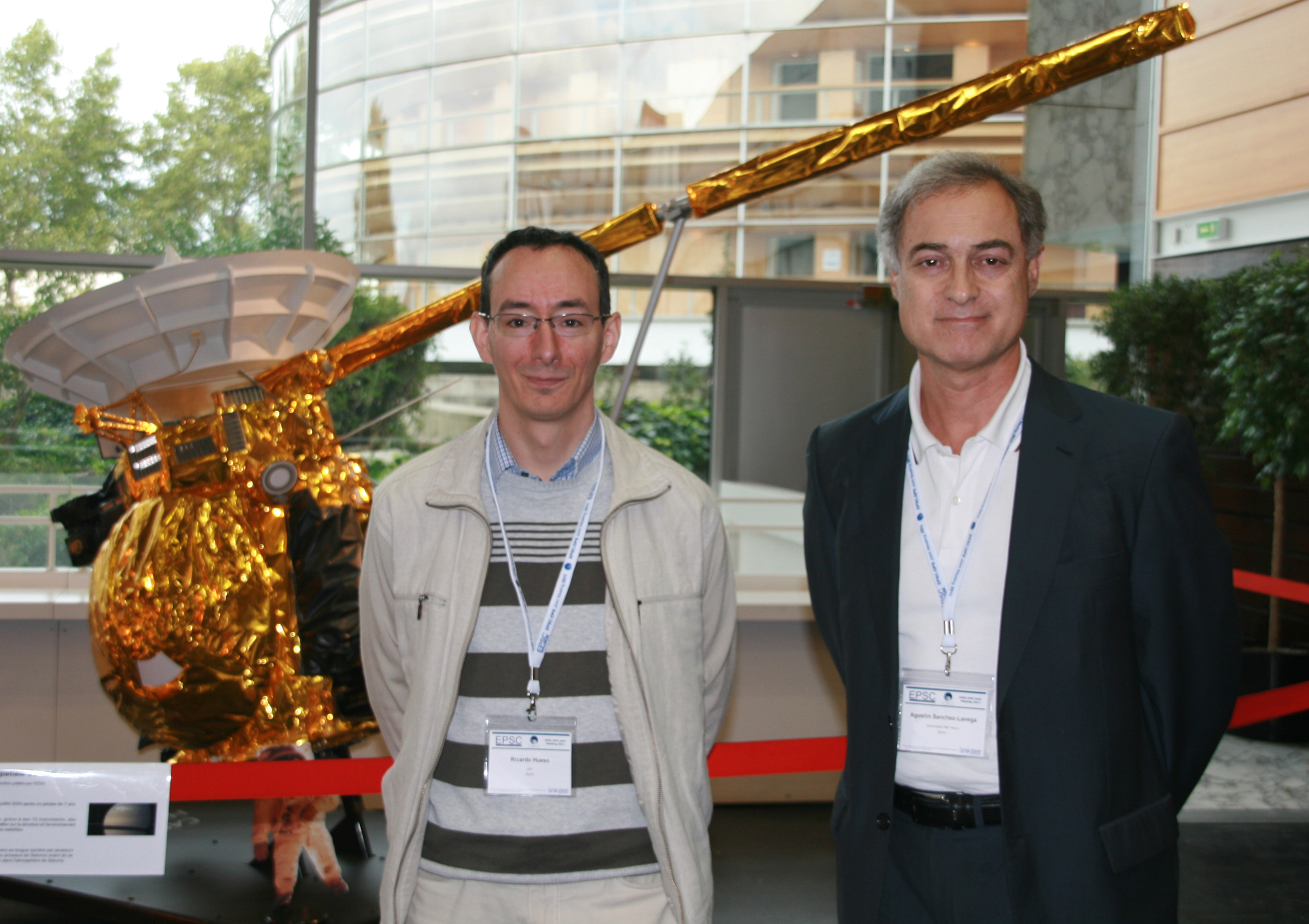
From left to right, Ricardo Hueso, a UPV/EHU researcher; and Agustín Sanchez Lavega, head of the UPV/EHU's Planetary Sciences Group. -

Javier Peralta, member of the Japanese Akatsuki space mission at JAXA and holder of a PhD from the UPV/EHU.


